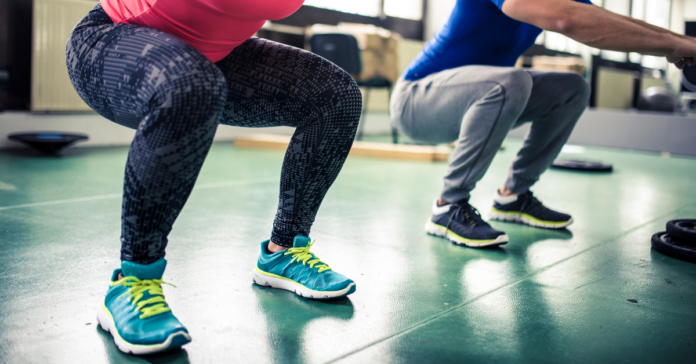In my 60s, I thank God each day for the ability to move my body. The older I get, the more I realize how important it is to care for it. Strengthening my body is not only a way to stay healthy but also a way to honor God’s gift of life and movement. We know from Scripture that God cares deeply about our bodies and wants us to take good care of them. As Proverbs 31:17 says, “She sets about her work vigorously; her arms are strong for her tasks.” Strengthening our bodies enables us to continue fulfilling the work God has set before us with vigor, energy, and joy.
As we age, our bones naturally lose density, making them more vulnerable to fractures and osteoporosis. However, strength training is one of the best ways to maintain and even increase bone density, reduce the risk of falls, and keep us moving with grace and strength. Here are three strength training moves that have been key in helping me build stronger bones and maintain mobility in my 60s—and I hope they will help you, too!
1. Squats
Squats are one of the best lower-body exercises to strengthen your bones, especially in your hips, thighs, and lower back. By loading the body with your weight and adding resistance, squats help increase bone density in the lower body and improve joint health. You can modify squats by using a chair or wall for support if necessary.
How to do it:
- Stand with feet shoulder-width apart, with your toes slightly turned outward.
- Push your hips back as if you’re sitting down into a chair, keeping your chest lifted and knees behind your toes.
- Lower yourself as far as comfortable (aim for thighs parallel to the floor).
- Press through your heels to stand back up to the starting position.
Pro Tip: Add a light dumbbell or kettlebell to increase resistance as you progress.
2. Lunges
Lunges are excellent for targeting the lower body, including the quads, hamstrings, and glutes. This unilateral exercise also improves balance and coordination, which is important for fall prevention as you age.
How to do it:
- Start by standing tall with feet hip-width apart.
- Step forward with one leg, bending both knees to lower your body into a lunge position. Your back knee should hover just above the ground.
- Push through the front heel to return to standing, then repeat on the other side.
Pro Tip: Try doing lunges with dumbbells in each hand to add extra resistance for an increased challenge.
3. Push-Ups
Push-ups may be thought of as a chest exercise, but they’re actually great for strengthening the upper body, particularly the bones in the arms, shoulders, and chest. They can be performed on the floor or against a wall, making them adaptable for all fitness levels.
How to do it:
- Start in a plank position with hands placed slightly wider than shoulder-width apart and feet together.
- Lower your body by bending your elbows until your chest is near the ground.
- Press through your palms to push back up to the starting position.
- For a modified version, perform the push-up on your knees or against a wall.
Pro Tip: As you gain strength, try elevating your feet on a bench to make the exercise more challenging.
4. Crunches
Crunches are a great way to strengthen your core, which plays a vital role in supporting your spine and overall posture. A strong core helps prevent back pain and improves balance, both of which are essential for maintaining bone health as you age.
How to do it:
- Lie on your back with your knees bent and feet flat on the floor, hip-width apart.
- Place your hands behind your head or across your chest (avoid pulling on your neck).
- Engage your core and lift your shoulders off the floor, curling your torso towards your knees.
- Slowly lower back down to the starting position without letting your back arch.
Pro Tip: To make this exercise more challenging, try adding a twist at the top to target your obliques or hold a light weight in your hands.
Why These Moves Matter
Strength training not only increases muscle mass but also has a direct positive impact on bone density. Weight-bearing exercises like squats, lunges, and push-ups stimulate the bones to respond by becoming stronger, denser, and more resilient. This is key in preventing osteoporosis and fractures as you age. Core strength is also essential for maintaining good posture, reducing the risk of back injuries, and supporting proper alignment. Strong abdominal muscles help stabilize the spine and can reduce the strain on your bones and joints, keeping you moving well into your later years.
When beginning any strength training routine after 50, it’s important to start with proper form and progress gradually. Focus on controlled movements and listen to your body. If you’re new to strength training, consider working with a trainer to ensure you’re using correct techniques and avoid injury.
Click here to see a demonstration video showing proper form for each of these exercises.
Remember, consistency is key! Aim to incorporate these strength training moves into your routine 2-3 times a week for the best results. As you build strength, you’ll not only improve your bone health but also enhance your overall fitness and quality of life.
Stay strong and take care of your bones!




